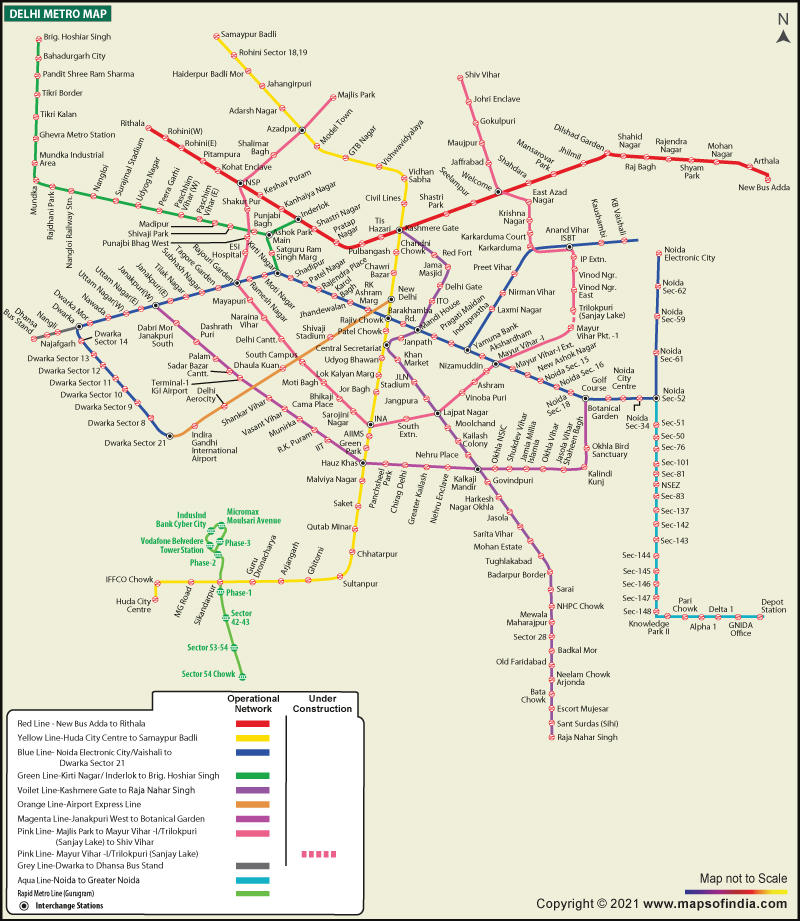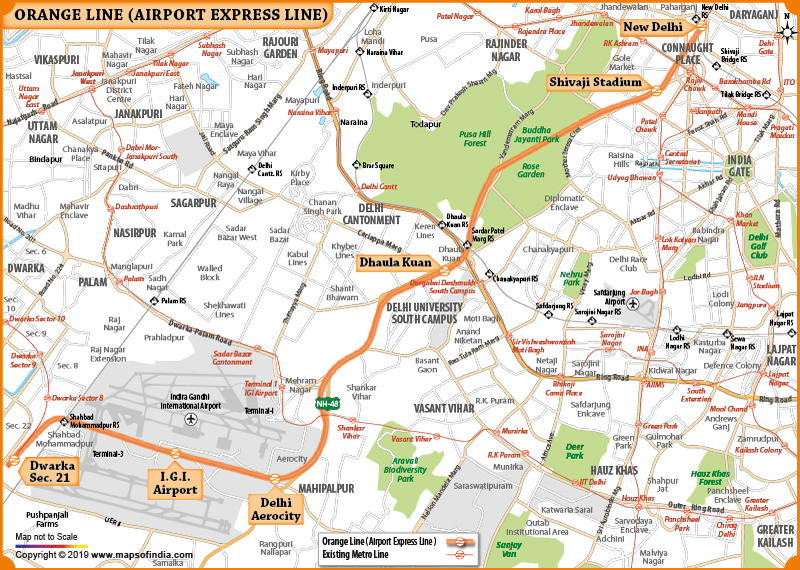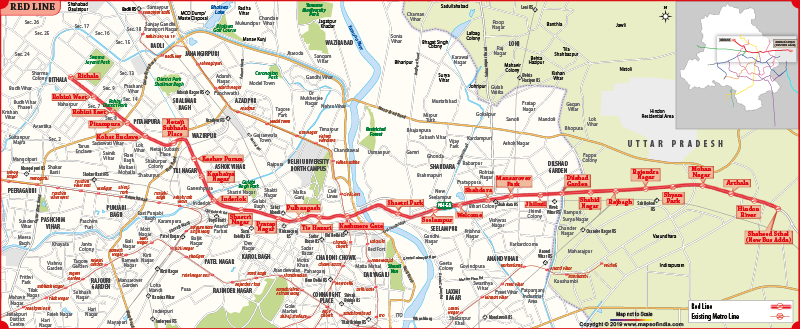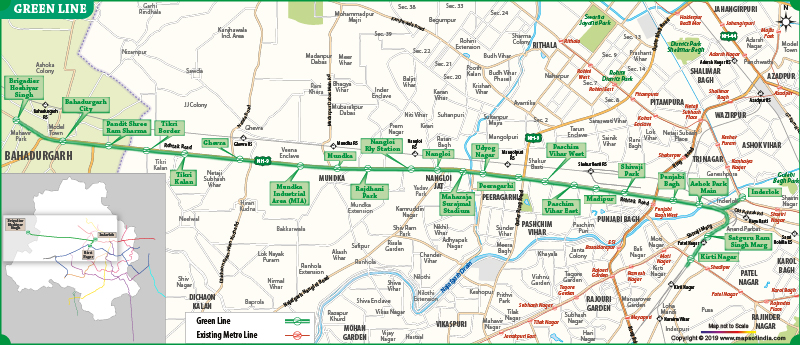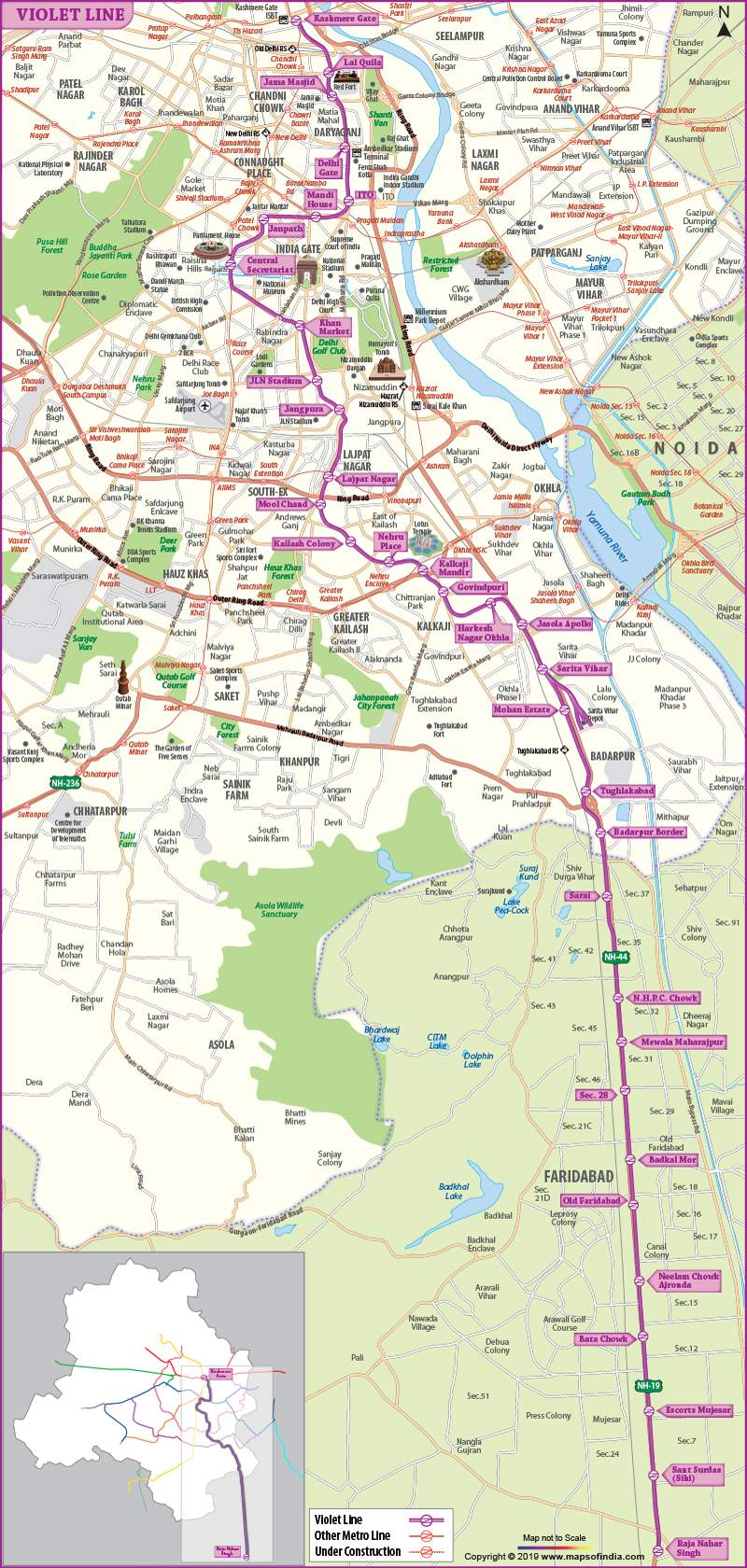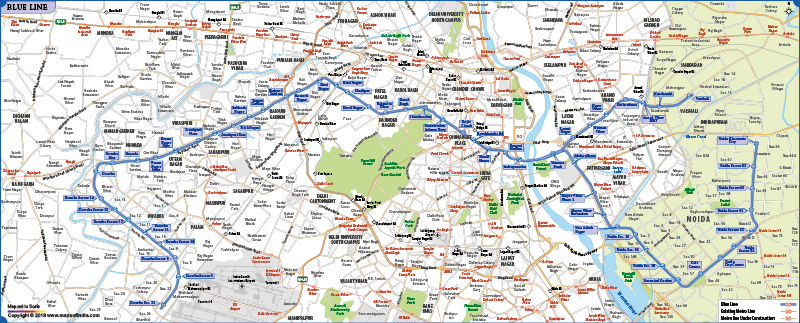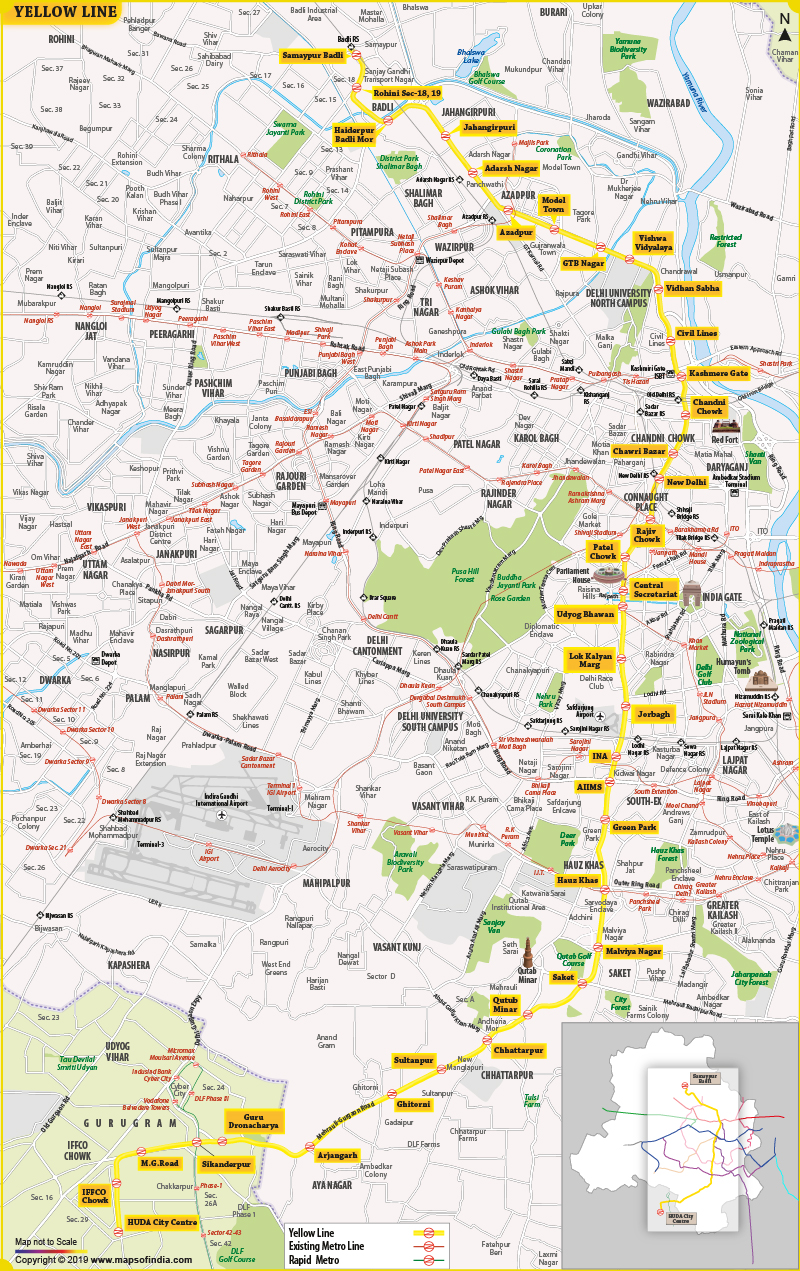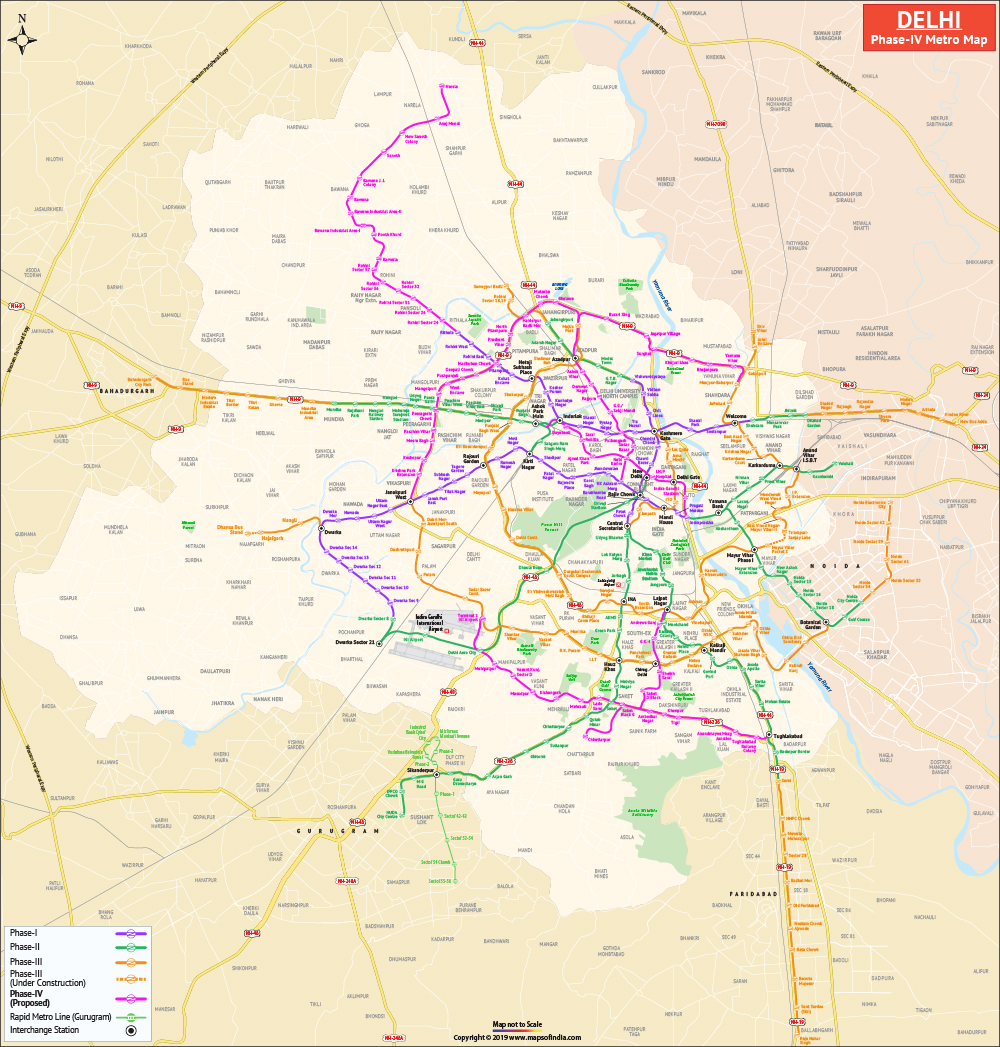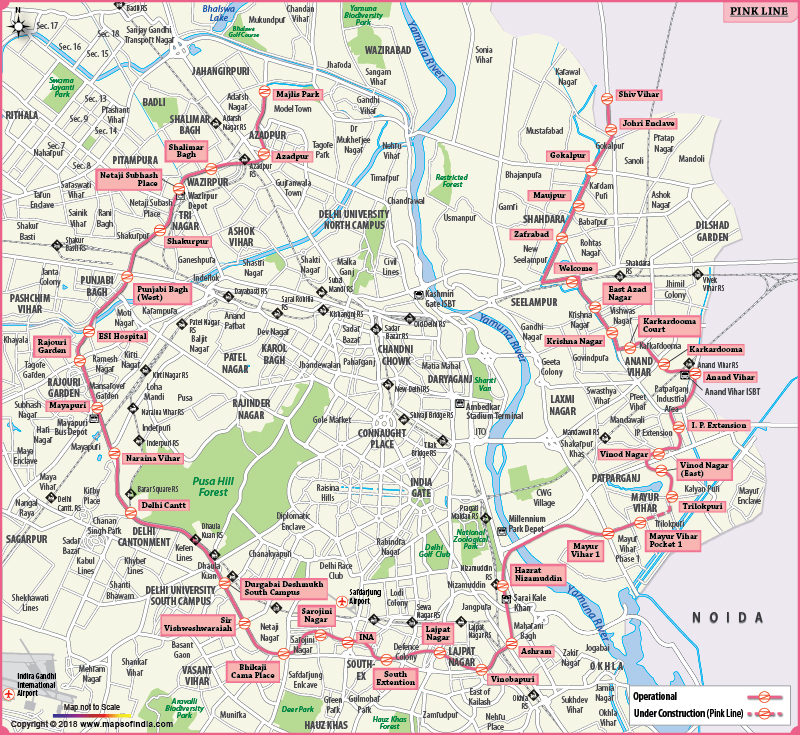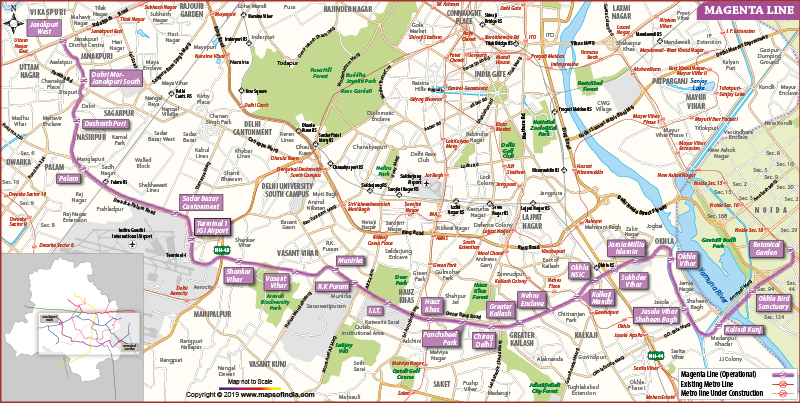The Delhi Metro is recognised as one of India's most sophisticated and efficient urban transit systems. It offers seamless connectivity across Delhi and the neighboring regions. It is operated by Delhi metro rail corporation and has undergone significant expansion since its inception.
The network currently has 12 active metro lines and 232 operational stations. With continuous development including the introduction of new routes under phase 4 the metro network continues to evolve.
The metro network spans a vast 450+ km and effectively linke key locations across Delhi while extending its services to cities like Noida, Ghaziabad, Faridabad, Gurgaon, Bahadurgarh, and Ballabgarh. It operates from 5:00 AM to 11:30 PM.
This ensures comprehensive coverage for professionals, students and travelers alike. Metro is designed to provide fast, affordable and environmentally friendly transportation. Apart from this, it also reduces the traffic congestion and pollution in the capital region.
One of the most influential features of the Delhi Metro is the Automatic Fare Collection System. It enables contactless ticketing to streamline passenger movement. The modern air conditioned coaches enhance the commuter comfort and makes travel pleasant even during peak hours and extreme weather conditions.
Additionally smart card and QR based ticketing options facilitate hassle free entry and exit. This allows the passengers to avoid long queues at ticket counters. The metro system is further integrated with buses and by sharing services which ensures convenient last mile connectivity and promotes sustainable urban mobility.
With the expansion of the metro network under Phase IV, new corridors and improved interchange stations promise greater connectivity and accessibility. The Delhi Metro is a cornerstone of urban transportation with world-class infrastructure, advanced safety measures, and passenger friendly amenities. Delhi metro offers a reliable time saving and cost effective travel option. It has continued to shape the future of public transport in the region.
The Delhi Metro consists of color-coded lines. Each of these lines serve different parts of the city. Here are the major metro lines in Delhi Metro.
The Red Line of the Delhi Metro has been operational since December 24, 2002. It is the first metro corridor in Delhi. The red line marked the beginning of the city’s modern urban transit system. It runs from Rithala in North West Delhi to Shaheed Sthal (New Bus Adda) in Ghaziabad. It covers a total distance of 34.55 km with 29 stations. The red line plays an important role in linking Delhi with Ghaziabad which is a major citywide city in Uttar Pradesh. It serves densely populated areas like Shahdara, Dilshad Garden and Inderlok. The line has interchanges at:
The Yellow Line of the Delhi Metro is one of the most important corridors. It connects Samaypur Badali in North Delhi to Millennium City centre in Gurgaon. Spanning 49 kilometers with 37 stations it serves as an important link between Delhi and Haryana. The line intersects with other metro lines and makes it a key interchange corridor:
The blue line is the longest corridor of Delhi metro and connects Dwarka Sector 21 to Noida city centre and Vaishali. It spans approximately 56.11 kilometers and consists of 50 stations. This makes it one of the longest metro routes in the network.
The blue line was inaugurated in December 2005 with subsequent expansions extending it to Noida and Vaishali. It passes through key commercial and residential hubs such as Rajiv chowk, mandi house and Anand vihar. The corridor has two branches one leading to Noida electronic city and the other to Vaishali. The key interchanges on the blue line are as follows:
The Green line of Delhi metro also known as line 5 is an important corridor that serves as 2 individual sections. The main line runs from Inderlok to Brigadier Hoshiyar Singh in Bahadurgarh. There is a branch line which runs from Kirti Nagar to Ashok Park Main.
The line spans approximately 28.79 kilometres and consists of 24 stations. It is fully elevated and ensures smooth transit along the NH 9 corridor which is one of the busiest routes in North West Delhi.
The Green Line facilitates easy transfer of passengers through its four interchange stations:
The Violet line of the Delhi metro connects Kashmere gate to Raja Nahar Singh. There are 34 metro stations with a total length of 46.34 kilometres. The key interchange stations on the line includes:
The Pink Line stretches across a distance of 57.49 kilometers and runs between Majlis Park metro station and Shiv Vihar Metro Station. There are a total 30 metro stations along this route. It runs in a U-shaped pattern along the Ring Road.
The Pink Line has interchanges with most of the operational lines. These are:
The Magenta Line is the first driverless metro in India. The line trundles across South Delhi and spans 40.26 kilometers. It consists of 26 metro stations. The line directly serves Terminal 1 of the Indira Gandhi International Airport.
The Magenta Line has interchanges at the following stations:
The Grey Line is one of the shortest yet an important route in the Delhi Metro network. It spans 5.19 km with just 3 stations. It is operational from 2019 as part of Phase III and connects Dwarka in Southwest Delhi to Najafgarh. The Grey Line has a single interchange at Dwarka station, connecting to the blue line.
The Airport Express Line or Orange Line runs from New Delhi to Yashobhoomi Dwarka Sector 25. The total length of the line is 22.7 km. The line runs at a speed of 120 km/h and provides a 15-minute journey from New Delhi to IGI Airport. The line has three interchange stations:
Last Updated on: December 18, 2025
The network currently has 12 active metro lines and 232 operational stations. With continuous development including the introduction of new routes under phase 4 the metro network continues to evolve.
The metro network spans a vast 450+ km and effectively linke key locations across Delhi while extending its services to cities like Noida, Ghaziabad, Faridabad, Gurgaon, Bahadurgarh, and Ballabgarh. It operates from 5:00 AM to 11:30 PM.
This ensures comprehensive coverage for professionals, students and travelers alike. Metro is designed to provide fast, affordable and environmentally friendly transportation. Apart from this, it also reduces the traffic congestion and pollution in the capital region.
One of the most influential features of the Delhi Metro is the Automatic Fare Collection System. It enables contactless ticketing to streamline passenger movement. The modern air conditioned coaches enhance the commuter comfort and makes travel pleasant even during peak hours and extreme weather conditions.
Additionally smart card and QR based ticketing options facilitate hassle free entry and exit. This allows the passengers to avoid long queues at ticket counters. The metro system is further integrated with buses and by sharing services which ensures convenient last mile connectivity and promotes sustainable urban mobility.
With the expansion of the metro network under Phase IV, new corridors and improved interchange stations promise greater connectivity and accessibility. The Delhi Metro is a cornerstone of urban transportation with world-class infrastructure, advanced safety measures, and passenger friendly amenities. Delhi metro offers a reliable time saving and cost effective travel option. It has continued to shape the future of public transport in the region.
Delhi Metro Lines and Routes
The Delhi Metro consists of color-coded lines. Each of these lines serve different parts of the city. Here are the major metro lines in Delhi Metro.
Red Line (Line 1)
The Red Line of the Delhi Metro has been operational since December 24, 2002. It is the first metro corridor in Delhi. The red line marked the beginning of the city’s modern urban transit system. It runs from Rithala in North West Delhi to Shaheed Sthal (New Bus Adda) in Ghaziabad. It covers a total distance of 34.55 km with 29 stations. The red line plays an important role in linking Delhi with Ghaziabad which is a major citywide city in Uttar Pradesh. It serves densely populated areas like Shahdara, Dilshad Garden and Inderlok. The line has interchanges at:
- Kashmere Gate (Yellow and Violet Lines)
- Welcome (Pink Line)
- Netaji Subhash Place (Pink Line)
- Inderlok (Green Line)
Yellow Line (Line 2)
The Yellow Line of the Delhi Metro is one of the most important corridors. It connects Samaypur Badali in North Delhi to Millennium City centre in Gurgaon. Spanning 49 kilometers with 37 stations it serves as an important link between Delhi and Haryana. The line intersects with other metro lines and makes it a key interchange corridor:
- Kashmere Gate ( Red and Violet Lines)
- Rajiv Chowk ( Blue Line)
- Central Secretariat (Violet Line)
- INA ( Pink Line)
- Hauz Khas ( Magenta Line)
Blue Line (Line 3 and 4)
The blue line is the longest corridor of Delhi metro and connects Dwarka Sector 21 to Noida city centre and Vaishali. It spans approximately 56.11 kilometers and consists of 50 stations. This makes it one of the longest metro routes in the network.
The blue line was inaugurated in December 2005 with subsequent expansions extending it to Noida and Vaishali. It passes through key commercial and residential hubs such as Rajiv chowk, mandi house and Anand vihar. The corridor has two branches one leading to Noida electronic city and the other to Vaishali. The key interchanges on the blue line are as follows:
- Rajiv Chowk (Yellow Line)
- Mandi House (Violet Line)
- Kirti Nagar (Green Line)
- Janakpuri West Magenta Line)
- Botanical Garden (Magenta Line)
- Anand Vihar (Pink Line)
- Karkarduma (Pink Line)
- Mayur Vihar Phase-I (Pink Line)
- Dwarka Sector 21 (Delhi Airport Express Metro Line)
- Yamuna Bank (Interchange with Main Blue Line)
- Anand Vihar (Interchange with Pink Line)
- Kaushambi
- Vaishali (Terminal)
Green Line (Line 5)
The Green line of Delhi metro also known as line 5 is an important corridor that serves as 2 individual sections. The main line runs from Inderlok to Brigadier Hoshiyar Singh in Bahadurgarh. There is a branch line which runs from Kirti Nagar to Ashok Park Main.
The line spans approximately 28.79 kilometres and consists of 24 stations. It is fully elevated and ensures smooth transit along the NH 9 corridor which is one of the busiest routes in North West Delhi.
The Green Line facilitates easy transfer of passengers through its four interchange stations:
- Kirti Nagar (Blue Line)
- Inderlok (Red Line)
- Punjabi Bagh West (Pink Line)
Violet Line (Line 6)
The Violet line of the Delhi metro connects Kashmere gate to Raja Nahar Singh. There are 34 metro stations with a total length of 46.34 kilometres. The key interchange stations on the line includes:
- Kashmere Gate (Red Line and Yellow Line)
- Central Secretariat (Yellow Line)
- Mandi House (Blue Line)
- Jangpura (Delhi-Meerut RRTS)
- Kalkaji Mandir (Magenta Line)
- Lajpat Nagar (Pink Line)
Pink Line (Line 7)
The Pink Line stretches across a distance of 57.49 kilometers and runs between Majlis Park metro station and Shiv Vihar Metro Station. There are a total 30 metro stations along this route. It runs in a U-shaped pattern along the Ring Road.
The Pink Line has interchanges with most of the operational lines. These are:
- Azadpur (Yellow Line)
- Netaji Subhash Place (Red Line)
- Punjabi Bagh West (Green Line)
- Rajouri Garden (Blue Line)
- Durgabai Deshmukh South Campus (Airport Express)
- Lajpat Nagar (Violet Line)
- Anand Vihar ISBT (Blue Line)
- Welcome (Red Line)
- Karkarduma (Blue Line)
- Mayur Vihar-I (Blue Line)
Magenta Line (Line 8)
The Magenta Line is the first driverless metro in India. The line trundles across South Delhi and spans 40.26 kilometers. It consists of 26 metro stations. The line directly serves Terminal 1 of the Indira Gandhi International Airport.
The Magenta Line has interchanges at the following stations:
- Dabri Mor – Janakpuri South (Blue Line)
- Hauz Khas (Yellow Line)
- Janakpuri West, Botanical Garden (Blue Line)
- Kalkaji Mandir (Violet Line)
Grey Line (Line 9)
The Grey Line is one of the shortest yet an important route in the Delhi Metro network. It spans 5.19 km with just 3 stations. It is operational from 2019 as part of Phase III and connects Dwarka in Southwest Delhi to Najafgarh. The Grey Line has a single interchange at Dwarka station, connecting to the blue line.
Orange Line
The Airport Express Line or Orange Line runs from New Delhi to Yashobhoomi Dwarka Sector 25. The total length of the line is 22.7 km. The line runs at a speed of 120 km/h and provides a 15-minute journey from New Delhi to IGI Airport. The line has three interchange stations:
- New Delhi (Yellow Line)
- Dhaula Kuan ( Pink Line)
- Dwarka Sector 21 (Blue Line)
Delhi Metro Phase IV
- The Green Line Extension: The Green Line Extension from Inderlok to Indraprastha will add 10 new stations. It will significantly improve the connectivity in central and northern Delhi. Expected to be completed by 2026 expansion will ease congestion and provide better access to commercial and residential areas. It is a crucial step in the Delhi metro phase for development. The 10 stations on the Green Line Extension include Inderlok, Dayabasti, Ajmal Khan Park, Jhandewalan Mandir, Nabi Karim, New Delhi, Delhi Gate, Delhi Sachivalaya and Indraprastha.
- Golden Line (Tughlakabad – Aerocity): The Golden Line of the Delhi Metro will connect Tughlakabad to Aerocity. It will provide direct airport access and improve connectivity in South Delhi. The line spans 25.82 kms and will feature 16 stations. The line is expected to be completed by 2027.
- Sonipat Metro Expansion: This line will extend the Delhi metro yellow line from Samaypur Badli to Nathpur Haryana. It will cover 26.5 km with 21 new stations. The line is expected to be completed by 2028 and the extension will improve cross-border connectivity.
- The Pink Line Expansion: The pink line expansion will cross the yamuna river for the fifth time with a new bridge connecting Soorghat and Sonia Vihar. It will span 560 meters and the bridge would be part of Majlis Park- Maujpur Corridor.
| Red Line | Rithala ↔ Shaheed Sthal (New Bus Adda), 34.55 km, 29 stations, Interchanges: Kashmere Gate, Welcome, Netaji Subhash Place, Inderlok |
| Yellow Line | Samaypur Badli ↔ Millennium City Centre, 49 km, 37 stations, Interchanges: Kashmere Gate, Rajiv Chowk, Central Secretariat, INA, Hauz Khas |
| Blue Line | Dwarka Sector 21 ↔ Noida City Centre/Vaishali, 56.11 km, 50 stations, Interchanges: Rajiv Chowk, Mandi House, Kirti Nagar, Janakpuri West, Botanical Garden, Anand Vihar, Karkarduma, Mayur Vihar Phase-I, Dwarka Sector 21 |
| Green Line | Inderlok ↔ Brigadier Hoshiyar Singh, 28.79 km, 24 stations, Interchanges: Kirti Nagar, Inderlok, Punjabi Bagh West |
| Violet Line | Kashmere Gate ↔ Raja Nahar Singh, 46.34 km, 34 stations, Interchanges: Kashmere Gate, Central Secretariat, Mandi House, Jangpura, Kalkaji Mandir, Lajpat Nagar |
| Pink Line | Majlis Park ↔ Shiv Vihar, 57.49 km, 30 stations, Interchanges: Azadpur, Netaji Subhash Place, Punjabi Bagh West, Rajouri Garden, Durgabai Deshmukh South Campus, Lajpat Nagar, Anand Vihar ISBT, Welcome, Karkarduma, Mayur Vihar-I |
| Magenta Line | Janakpuri West ↔ Botanical Garden, 40.26 km, 26 stations, Interchanges: Dabri Mor - Janakpuri South, Hauz Khas, Kalkaji Mandir |
| Grey Line | Dwarka ↔ Najafgarh, 5.19 km, 3 stations, Interchange: Dwarka (Blue Line) |
| Orange Line | New Delhi ↔ Yashobhoomi Dwarka Sector 25, 22.7 km, Interchanges: New Delhi, Dhaula Kuan, Dwarka Sector 21 |
FAQs
Q1: What is the timing of Delhi Metro?
The timing of Delhi Metro is 5:00 AM to 11:30 PM.
Q2: How can one buy a Delhi Metro ticket?
You can buy a Delhi metro ticket via smart card, QR code or token.
Q3: Which is the longest Delhi Metro Line?
The longest Delhi Metro line is the Pink Line. It spans over 58.43 km.
Q4: Which metro goes to Delhi Airport?
There are two lines which go to Delhi Airport. The Airport Express Line (Orange) & Magenta Line (Terminal 1).
Last Updated on: December 18, 2025
Metro Rails in Indian Cities
